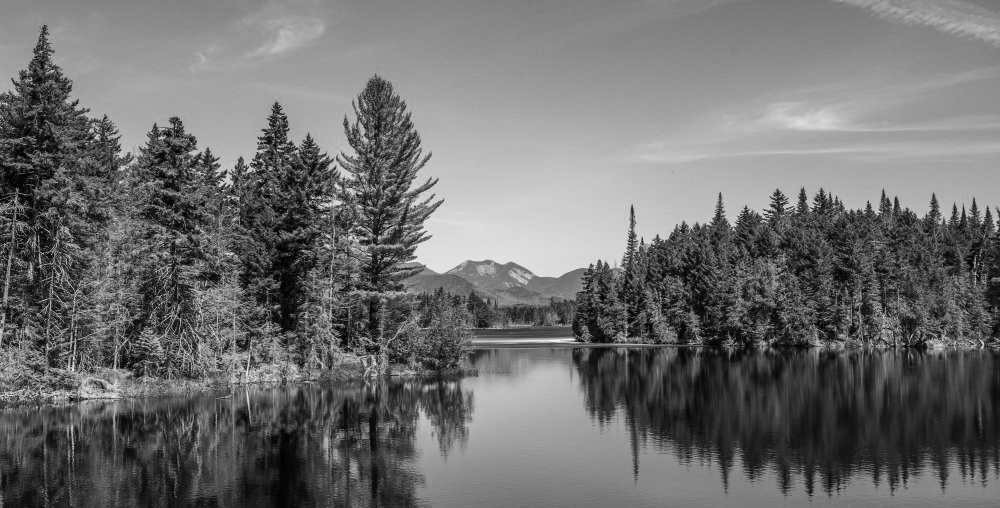In the era of Instagram, ‘glamping’ has become the new means for achieving a drool-worthy photograph, able to elicit enough likes from your followers to boost your self-esteem for an afternoon.
As the number of ‘glampers’ traveling to Upstate New York increases, the degradation of the Adirondack Park accelerates. The number of hikers frequenting the Park has sky rocketed in the last few decades, with more un-experienced individuals seeking out the thrill of surmounting a high peak or kayaking through the roaring rivers than ever before.
The Boreas Ponds tract, which was officially opened to the public in the summer of 2016, is one such area that is experiencing increasing numbers of visitors- but not everyone is happy with the rising human presence. Those individuals invested in the protection of the park’s natural environment are pushing for NY-state to classify the lands as “wilderness,” thus barring motorized vehicles from some of the park’s most fragile habitats and waters. Other locals emphasize that an ease of access is necessary in the Boreas Ponds tract, though. They highlight that access would be more readily available through the allowance of motor vehicles, such as ATVs and four-wheelers, and that this allowance would increase tourism and inject much-needed funds into the local economy.
The increase in tourism within the ADKs in the last decade has led NY-state to become more invested in the Park. The state’s newfound interest has positively manifested itself through more improvements to infrastructure, like the road improvements in Lake Placid, NY and base-camp lodges at Whiteface Mountain in Wilmington, NY. However, the tourism industry has not yet garnered enough financial backing from the state to prove truly protective of the area. Although the number of hikers is at an all-time high, focus on the cultivation of trail resources remains scarce. Forest rangers have less staff now than ever before, and trail maintenance has seemingly been pushed to the wayside as of late. Those individuals that are involved in the upkeep of the trails are often volunteers.
Other negative impacts from the steadily increasing rates of tourism are also discernible. Hike up to the top of most high peaks and you will be confronted by signs highlighting the environmental degradation caused by going off the trail and leaving waste behind. Even things that seem entirely natural, like going to the bathroom in the woods, can drastically impact the wild environments of these peaks. Consequently, with ever increasing numbers of individuals seeking out the so-called “Adirondack experience,” the level of waste left behind, both human and non-human, is also on the rise.
The negative impacts of the rising numbers of individuals traveling through the park has led some locals to demand for greater emphasis on environmental protection. The Adirondack Council has become one of the loudest voices in the discussion on the Boreas Ponds Tract; the organization highlights that if NY-state does not classify the lands as ‘wild,’ and allows motor vehicle access, the already fragile habitats in the area will be negatively impacted. Furthermore, they assert that a lack of regulation of motor vehicles in the area could lead to an increase in invasive species.
A decision on the classification of the Boreas Ponds Tract was supposed to have been handed down in April of this year, but, after much deliberation, the Adirondack Park Agency (APA) decided to postpone their decision. A definitive date for the decision has not yet been set, and agencies like the Adirondack Council are increasingly itching for an answer to their demands.
Governor Andrew Cuomo has attempted to quiet the outcries by offering “something-for-everybody” with his proposition of a small intensive area located in the southern end of the Tract, which would house formal lodging and an access road to the dam. However, debates on the level of access continue, with both sides of the issue seemingly unwilling to budge.
It has been stated in the Adirondack Almanack, an online journal, that the classification of the entirety of the Boreas Ponds Tract as wilderness has been pushed off the table as of late, with Cuomo’s administration favoring a more economically-based classification that will promote more tourism. The Adirondack Council and environmental activists alike hope that this is not the case.
To get involved, attend the November 16-17 Adirondack Park Agency meeting at the APA headquarters, located in Ray Brook, NY. Those in opposition to commercial lodging facilities being built on the tract will be gathering there in a silent protest against the proposal, and those in favor will be there alongside them.



